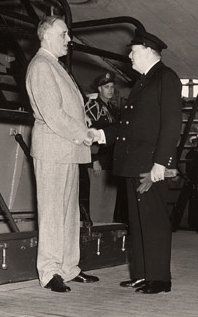
Director of Public Relations for The Phoenixmasonry Masonic Museum and Library. Portrait by Travis Simpkins.
If you have a lot of Mason friends and follow various Masonic and related personalities, like I do, you for sure have noticed how profile photos have been shifting to the signature style portrait drawings of artist Travis Simpkins. Phoenixmasonry is pleased to have had the opportunity to interview this prolific artist so we can all learn more about him and his art.
EL (Elena Llamas): Hello, Bro. Travis, thank you for agreeing to this interview. I am honored to have the chance to talk to you about your work, which I have been admiring for quite some time now.
TS (Travis Simpkins): Thank you. It is my pleasure.
EL: Tell us about your training as an artist. When did you know you had an interest and talent for art? Did you study art formally?
TS: I’m sure I must have possessed some innate talent as a child, but I didn’t really pursue many artistic interests until my teen years.

My art education was two-fold:
I earned a Bachelor of Fine Arts (BFA) Degree from Anna Maria College [in Massachusetts] in 2002. At Anna Maria, the curriculum focused on traditional forms of art rendered through a diverse range of mediums, from painting to sculpture, but an emphasis was placed on working from life. Working from life means that you are looking at actual 3D models in front of you, be it people or objects.
I also undertook additional studies in Arizona with Photorealist artist James Frederick Mueller. Jim had some success in the 1970’s and 80’s, including a portrait commission of a former U.S. President. Along with the detailed logistics of the method, I learned a very valuable skill from Jim… the ability to create convincing portraits while working from photographs.
EL: Well, your portraits are definitely convincing!

TS: In my work, I still utilize both disciplines on a regular basis. I work from life while sketching objects in museums. With portraits, however, I work from photographs. Using photos offers greater freedom. I’m not limited by proximity and the internet has allowed the whole world to become an accessible market. I can accept commissions and create portraits of people I’ve never met, many of whom live thousands of miles away.
EL: That is wonderful, yes
TS: In the realm of art, portraiture has always been one of the most difficult subjects to master. It offers both a challenge and a sense of accomplishment. If you can render a human face, and do it well, then you can draw just about anything else. There will always be a demand for well-crafted, quality portraits.
EL: I believe you! You have to be true to what you see. It must be quite difficult.

EL: Many portrait artists switch the background or medium of their work. You have a very unique and consistent signature style which involves a, and please excuse my lack of technical knowledge here, to the untrained eye it seems to involve a discreet pink background with black and white strokes in either pencil or charcoal. How did you develop this style and why have you remained consistent using it?
TS: It’s a classic sketching technique, utilized for hundreds of years, reminiscent of Old Master drawings. I just take that historic sense and extend it to contemporary subjects. The end result has a timeless quality, connecting the past and present in a relatable way.
EL: How interesting.

TS: I keep making portraits in that particular style for a few reasons. Firstly, I work on commission and create artwork to order. The charcoal drawings are popular and I keep getting requests for that particular aesthetic. As long as the business demand is there, I’ll keep producing them. Secondly, it’s important for an artist to have a unique style; to have their works be instantly recognizable as being created by their hand. For me, these portraits border on that signature element.
EL: Absolutely
TS: Lastly, I simply enjoy creating them. I work quickly and lack the patience for slow and tedious mediums. Drawing offers a sense of spontaneity, immediacy and expressiveness that other art forms don’t.

EL: I noticed some of the Freemasons you have drawn portraits for have Masonic pins on their clothes, that is a very nice signature detail of yours.
TS: Good portraits display some attribute, prop or element to convey the subject’s personal interests and passions. Small visual details can help to tell a person’s unique story. Over the course of their Masonic journey, many Masons are deservedly honored for their achievements, and I’ve found that Masonic jewels make great portrait accessories.
EL: Besides drawing a lot of esoteric, personal, and Masonic portraits, you also have a series of archeological drawings, is this another interest of yours?
TS: I work with several museums and cultural institutions, and those sketches are based on works of art displayed in museum collections. I am usually assigned to draw certain objects, but others are chosen for my own enjoyment. Those sketches are interesting in that they offer an interpretive connection with history, with ancient works of art being filtered through my viewpoint as an artist in the present.

TS: In my work with the Isabella Stewart Gardner Museum, I create artwork for an ongoing HR program. I am tasked with creating sketches of works in the museum’s collection, which the museum then frames and presents as gifts to noteworthy recipients.
EL: That is awesome!
TS: I greatly enjoy the job, but more than that, I’m truly honored that the Gardner Museum recognizes the quality of my work and has chosen my art to represent their world-renowned collection.

TS: Earlier this year, I began working as an Art Advisor with the Massachusetts Senate. One of our State Senators wanted to have college student artwork from his constituency represented in his office at the State House in Boston, and I helped draft an initiative and offered logistical advice for the project. It is quite rewarding, personally, to see the proud expressions on the faces of the students and their parents as the artwork is put on display at the state capitol.
TS: Last year, I was hired by the Worcester Historical Museum to create portraits of three generations of the Salisbury Family (17th-18th Century benefactors of the city). My artwork was put on display in the circa 1772 Salisbury Mansion, placed alongside paintings by colonial-era portraitist Gilbert Stuart. Gilbert Stuart painted the famous portrait of George Washington (used on the dollar bill) and is one of my artistic heroes, so that was quite an honor.
EL: Wow! That is fantastic!

TS: I also work at the Worcester Art Museum, having taken on various roles from assisting in art classes to monitoring the safety and security of the artwork on display. I have also referred collectors I know to the Worcester Art Museum, and my efforts and connections in that regard have culminated in the addition of more than 300 works of art to WAM’s permanent collection, including 97 woodblock prints by Japanese artist Yoshida Toshi.
Art Security is a major concern of mine as well, both personally and professionally. I hold a certification from the International Foundation for Cultural Property Protection. I am a contributor to various art security forums, conducting research into art theft, preservation and archaeological ethics.
EL: How interesting. Keeping art safe is a challenge! Your wife is also a talented artist.
TS: My wife, Janet, is an amazing artist. She has a wonderful eye for detail. Currently, she is working on a series of miniature paintings, which have been on display in three gallery shows so far this year. We share a mutual love and respect, and I credit all of my success (artistic and otherwise) to her encouragement and support.
EL: Wonderful! How sweet! She does have an eye for detail as can be seen in the miniature painting below.

EL: Can anyone contact you for a portrait? If so, how and where?
TS: Portrait commissions can be made through my website: http://www.artcrimeillustrated.com
I can be emailed directly at: artcrimeillustrated@hotmail.com
Find my page on Facebook as “Travis Simpkins: Artist & Museum Professional”
Affordable prints of my portraits of historical Freemasons can be purchased through Cornerstone Book Publishers at: www.cornerstonepublishers.com
EL: Your work has rightfully earned a vibrant place in the hearts and minds of Freemasons. Is there anything I did not ask that you would like to talk about?
TS: I’m glad to hear others describe my Masonic portraits as a contribution to the fraternity, it’s meaningful to be able to play some part in my own way. It is a wonderful organization and being raised a Master Mason will always be a defining moment in my life. Since joining earlier this year, I feel that I’ve already made many lasting friendships and associations. I have experienced the start of an incredible journey and am open-minded to future opportunities in Freemasonry. All of the brethren at Morning Star Lodge in Worcester and the Grand Lodge of Massachusetts in Boston have been very welcoming and helpful. I am looking forward to joining the Scottish Rite Valley of Worcester and the Boston Consistory later this year. I hope to do a lot of traveling over the coming years and experience the Masonic art, architecture and fellowship in other areas as well.

EL: Your work is an outstanding contribution to Freemasonry and the Fraternity is most fortunate to have had you join. Thank you again, for this interview. Bro. Travis’ portraits cost about $200 (for an 8×10 inch drawing) if you would like to get your own or get one as a gift. Phoenixmasonry will certainty keep an eye on your work to let our friends and fans know what you are up to in the future. Thank you everyone for reading!








